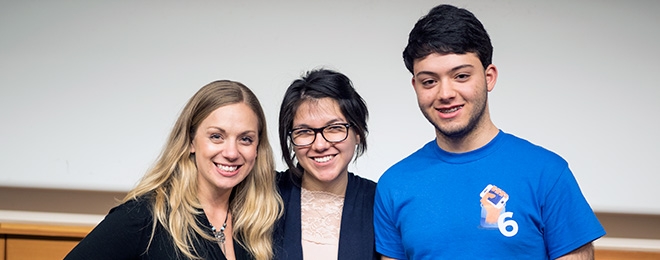
As part of our effort to highlight the wonderful individuals and companies in the Idaho community working in VR/AR we will also be highlighting some of the exemplary university students currently studying in this field. For our first installment we are highlighting Boise State University Freshman and Computer Science major Daniele Moro. When we spoke with him he had just finished his last final for the spring semester. However, unlike many college students Daniele won’t be taking it easy this summer. In a few weeks he heads off to Carnegie Mellon University for a summer research experience for undergraduates. There, his research experience will focus on robotics and he’s hoping to experiment with artificial intelligence, deep learning and multi agent systems. He will have to present his research at the end of the session and he is looking forward to bringing back the information he learns as well as the connections he’ll make in the program.
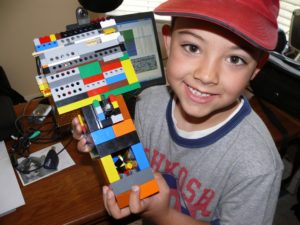
Daniele playing with Lego Mindstorms
I was interested to learn what Daniele’s journey was into CS and he said it started back in his childhood when his father bought him Lego Mindstorms. He had always loved playing with legos, but this took it to another level and he loved programming with legos. In 9th grade he joined the First Robotics program and thoroughly enjoyed this experience as he started using real computer science tools (ie C++ and Git) His team made it through regionals and even competed at the national level. Another major learning experience for him was starting the International Climate Team along with three other students and a Hydrologist from BSU while in jr. high school. Through this organization Daniele started building low cost Arduino microcontroller weather stations. By the end of the school year he had secured a summer internship at BSU and the weather station they built was installed on the roof of his school. (He was only 13 years old!) The organization continued to grow through his time in high school and he helped start new clubs at Timberline, Boise and Capital high schools. They also partnered with the Trans-African HydroMeteorological Observatory (TAHMO) which allowed the schools to connect with partner schools in Africa. Even though he’s in college he’s still involved in the organization and is currently working on a weather station for the Marsing school district. He was also hired on as a student research engineer in his first semester where he helped develop a sonar snow depth weather sensor (which has been working great btw).
I also asked Daniele a few questions about his studies and thoughts around AR/VR.
What made you choose Computer Science as a major?
When I was young I loved building with LEGOs, but as I became older I saw a limitation to my resources. I only had so many LEGO bricks and so many possibilities. Furthermore, anything I constructed only lasted a few blissful minutes of play before I recycled the creation to build something new. What I honestly wanted was a bigger sandbox. Eventually, I finally found it: my computer, an endless digital world in which I could build anything I wanted. My dad introduced me to Scratch, a block-based programming tool, and I made games, tools, and more. But I eventually wanted something more powerful. I learned Python (https://www.python.org/) then C++, and then Java. I kept looking for bigger and bigger tools in order to keep building bigger. My goal in life is to use computers to solve humanity’s biggest problems. I’m interested in emerging technologies such as Big Data, Artificial Intelligence, and AR/VR because I believe that these emerging technologies can revolutionize how humans see and interact with their world. I hope to be part of a small group that uses technology and science to create unprecedented new tools. From virtual reality, to sentient AI, to personal virtual doctors, the future is open to everything. I love Computer Science because it allows me to explore these fascinating technologies in order to build software that truly impacts lives.
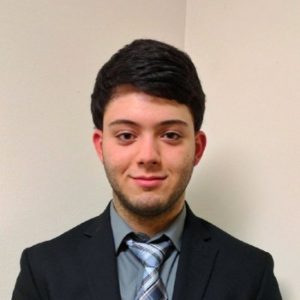
Daniele Moro
What got you interested in VR/AR?
The first time I encountered VR was with the Google Cardboard while in high school. I was fascinated by the technology because it was so cheap and accessible, yet surprisingly immersive. I decided to buy one for myself, and I began to explore its capabilities. This interest built up until I decided to learn more about VR and AR in college. After beginning my studies at Boise State, I decided to cofound the Augmented Reality and Virtual Reality Alliance (ARVRA) with a small group of brilliant students. ARVRA is a student organization where we explore and build virtual reality and augmented reality software. Within this club, I have learned so much about VR and AR technologies and I have built functioning VR and AR software. This organization has significantly enriched my time at Boise State and we plan to keep learning more about VR and AR as the technology improves. I also joined a Vertically Integrated Project at Boise State University where I am exploring the capabilities of high-resolution, stereoscopic virtual reality content.
Why are you passionate about VR?
VR can show completely new and different perspectives to people, something that I believe is extremely powerful. With VR, you can step into any world you want. Elementary school students in Boise are now able to go to the middle of Rome and see the Colosseum as if they were actually there. This ability for VR to teach and show completely different perspectives is revolutionary. Another important aspect to VR and AR are their abilities to visualize information. With these technologies, people are able to understand complex data in a way that makes sense to them. For example, virtual reality can be used by engineers to view complex 3D designs before they are constructed or allow scientists to visualize complex data in relation to global warming. This ability to create an entire artificial world is so powerful. You are almost playing God.
What is the coolest project you have worked on this year?
Participating in the Bronco Appathon 6 this year was an exhilarating experience (Daniele and his teammates pictured at the top of the blog). Working with the brilliant members of ARVRA, our goal was to design, build, and program an augmented reality app in under 48 hours. We decided to build an AR app that used a phone’s camera to understand where it was positioned in 3D space and then place augmented reality objects through the phone’s screen to show how to operate complex machinery. The app would place augmented reality hands and arrows in the augmented space to indicate to the user what buttons to press and actions to execute. For the appathon, we decided to build an app that would help teach BSU students how to change the filament on a complex 3D printer. We encountered a myriad technical challenges along the way that we overcame through several iterations of our app. After 48 hours, we presented the project to a group of judges. After a few minutes the judges announced that we won 1st place! We were so exhilarated and honored to participate in the program and learn so many valuable skills.
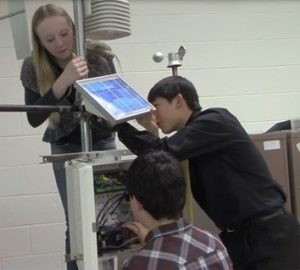
Students working on a weather station
What do you think are the greatest opportunities within the VR/AR space?
I believe that AR has the most potential because it allows us to enhance the world around us. We are in an information age that is exploding with an unbelievable amount of information. The challenge is: firstly, how do you analyze this data, and secondly, how do you visualize this the conclusions from the analysis? AI can help you analyze this data, but with AR you can then project this data in a meaningful way onto your own world. Imagine a future where you are walking along the street and you look at a landmark. Your AR headset (or maybe even contact lenses) would pop up information regarding that landmark right next to it. Or maybe you are lost in some big city. Your AR headset could show you where to go. For these reasons, I believe that especially AR has a huge potential and opportunities.
What company do you respect the most in this space and why?
I really appreciate what companies such as Google, HTC, and Microsoft are doing. Projects such as Google Cardboard are making VR more accessible to everyone. This is important as more people start to understand and explore VR. The Microsoft HoloLens is also fascinating because it is one of the most accurate augmented reality headsets in the market right now. Furthermore, HTC’s HTC Vive has incredible accuracy and goes a long way in reducing nausea when in VR. These companies are building the underlying structure for the VR/AR community to build upon and make new content.
Where do you hope we’ll be in 10 years with VR/AR?
Within the next 10 years, we will have countless breakthrough, but we will also probably run into some dangers. If the technology goes uncontrolled, we could lose touch with our reality and get lost in the worlds we create. But I remain optimistic and believe that eventually, these technologies will reimagine how we live. In entertainment, we could enter interactive stories where our decisions change the outcome. In health, VR could make exercising more fun and AR doctors could help people prevent dangerous diseases. From a social aspect, people will be able to interact with each other in their own virtual space, hundreds of miles apart. VR and AR are powerful tools where we can create our own worlds that we may shape however we like.
What innovations are you looking forward to most?
With my experience in VR and AR, I believe that the biggest bottleneck is hardware. It needs to be cheaper, lighter and higher quality. As the hardware becomes less expensive, more people will be able to buy VR/AR headsets and the market will grow. The hardware also needs to be lighter for people to be more comfortable in the AR/VR space for extended periods of time. Headsets needs to develop higher resolutions screens and higher quality gyroscopes so that they can be more responsive. This would eliminate nausea and provide a more immersive experience. I’m super excited for future innovations in hardware because I will then be able to build my own software to be more immersive and powerful.
Any final thoughts?
I have had an amazing time my first year in college. I have been able to dive into complex emerging technologies such as Virtual Reality and Augmented Reality. Various experiences with the Augmented Reality and Virtual Reality Alliance, the Bronco Appathon, and the Vertically Integrated Virtual Reality Project have allowed me to explore this fascinating field and begin creating software that will one day change how people live. I am incredibly excited for what the future holds, and I plan to be at the cutting edge of this technology every step of the way.
If you'd like to connect with Daniele he can be reached through his LinkedIn page.

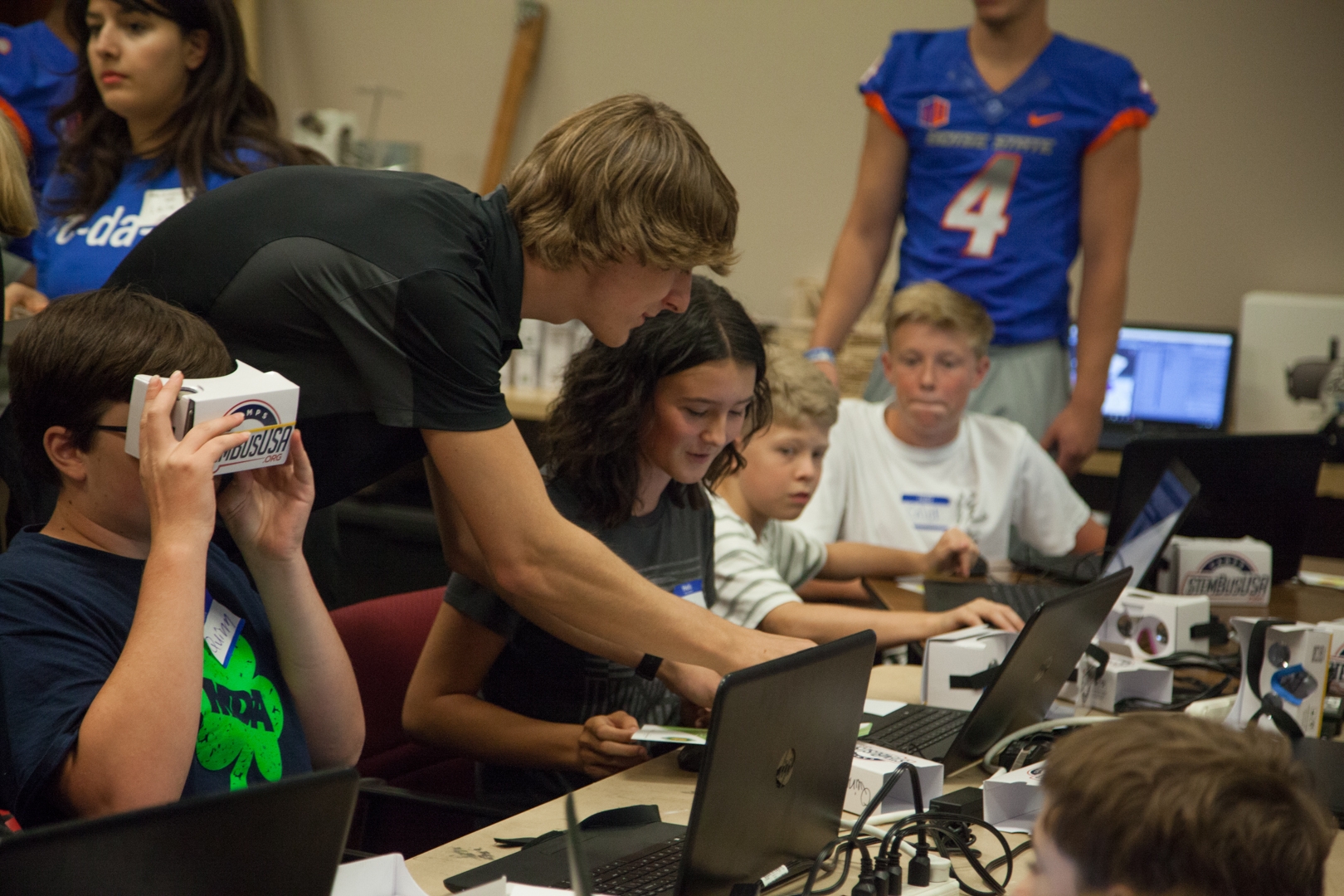

Recent Comments